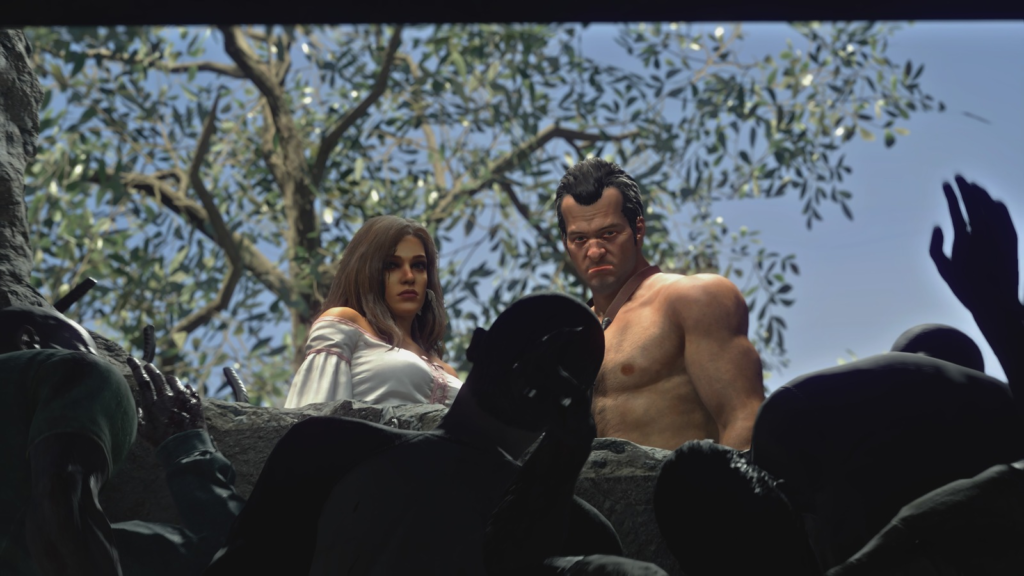
Initial release date: September 19, 2024
Platforms: PlayStation 5, Xbox Series X and Series S, Microsoft Windows
Developer: Capcom
Genres: Adventure game, Fighting game, Shooter game, Adventure
Publishers: Capcom, Capcom U.S.A., Inc.
Series: Dead Rising
Engine: RE Engine
Technology alters how we perceive the world. While it mostly influences our perception of the future, it can also alter the past. Information aggregation, digital restoration, remakes, and other methods of preservation keep the past alive, with the caveat that whatever technology touches loses its original form.
The Dead Rising Deluxe Remaster exemplifies technology’s proclivity for change in unique ways. The Deluxe Remaster is fundamentally identical to the original Dead Rising. The essential premise, plot, game design, and animations remain unchanged from when it was first released in 2006. Layered on top of that game are wholly new visuals, fairly tasteful mechanical enhancements, and changes to both large and minor aspects. Deluxe Remaster is as weird a beast as its “Deluxe” title implies, being more than an accurate remaster and less than a full-fledged remake.
Often, these efforts try to serve as a time capsule of things as they were. The Deluxe Remaster, in my opinion, represents the world in 2024 significantly better than it did in 2006. Given that an accurate remaster of Dead Rising already exists, it’s difficult to determine whether this difference is entirely positive or negative. In any case, it’s an intriguing topic that deserves to be discussed.
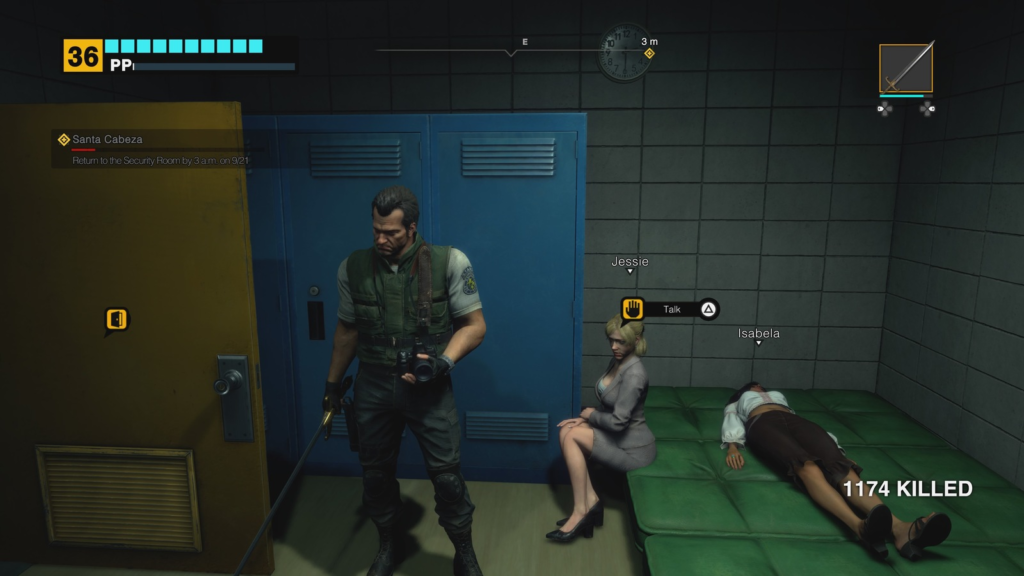
Not to brag to anyone who isn’t me, but the first Dead Rising is one of the best games ever created. Dead Rising provides players a straightforward mission: enter a zombie-infested shopping mall as journalist Frank West, discover out what’s going on, and live for 72 hours so that Frank may return home with the truth. Frank’s watch ticks down in real time, encouraging the player to prioritize and carefully evaluate their decisions. The game concept is based on principles established by early survival horror titles such as Resident Evil, namely the restricted inventory, zombies, and emphasis on survival. It then expands on those concepts with a sense of freedom, resulting in a massive, interconnected open world filled with hundreds of various things that players can employ to survive.
Yes, you can kill zombies. Dead Rising is known for being a zombie killing simulator, with several weapons and unusual methods to engage with the undead. I believe that the underlying appeal of Dead Rising is nearly entirely apart from this particular marketing hook. Zombies are a major part of Dead Rising’s appeal, but the fun of killing them is often overstated. Killing zombies lacks substance and purpose on its own. If Dead Rising was just about killing zombies, it would be a boring game that you would play for an hour and then abandon.
Dead Rising has proven significantly more enduring. The beauty of its design resides not in the act of killing zombies, but in how it integrates zombies into its broader survival strategy. Zombies serve as barriers. Although they are weak individually, they may quickly swarm and overwhelm anyone attempting to run through a cluster of them. As you work to advance the main story or save other survivors in the mall, maneuvering among and around the undead hordes is the game’s main source of stress.
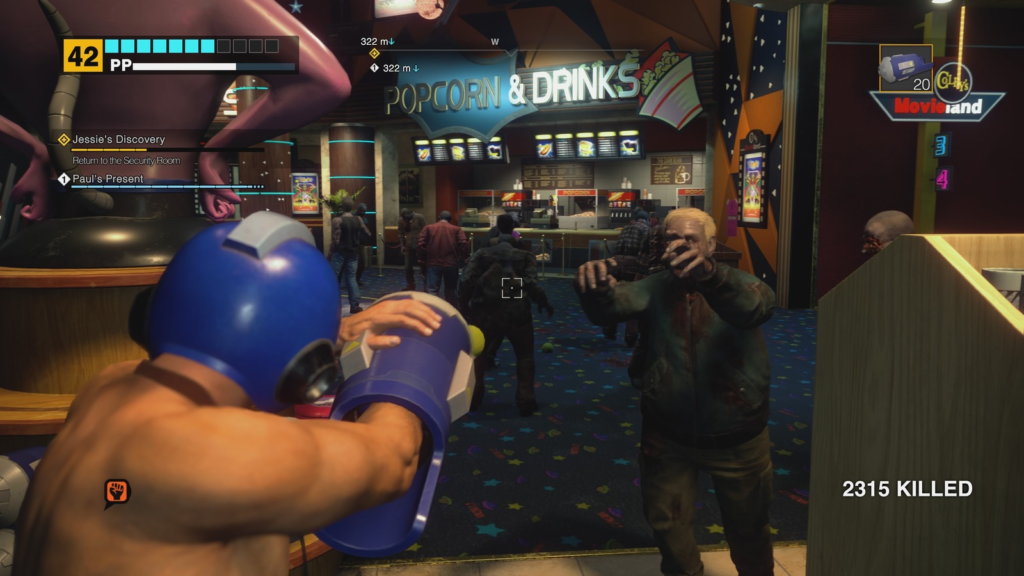
The zombies (and other adversaries introduced later in the game) push the player to become more strategic about how they move around the mall. Dead Rising offers a great deal of freedom, but the most fascinating applications are those that prioritize efficiency. Detours may take longer, but they expose you to less hazards. Intrepid investigation and meticulous mission completion will disclose secret shortcuts. Pros will take note of where items can be discovered and then build paths through the game to ensure they have the correct tools for each assignment. A powerful combination of weaponry, health items, and effect-granting books can transform a nightmare scenario into a pleasant, albeit gruesome, daydream.
Time constraints, frantic navigation, and learnt efficiency combine to create the true Dead Rising. Far more than a zombie-killing sim, it realizes survival horror gameplay on a much larger scale than anything published at the time. Almost no other game, including its own successors, exploits Dead Rising’s qualities in the same way.
Dead Rising’s unique game concept elevates it to the status of an all-time classic, so when a “Deluxe Remaster” is announced, I can’t help but feel defensive. We already have multiple games’ worth of terrible alterations done in an attempt to “improve” the original design. Whatever a development team adds to the original at this point must be tasteful.
To its credit, the Deluxe Remaster retains Dead Rising’s basic charm intact. Frank moves with his natural quirks. The mall’s layout and all of its contents remain just as you left them. Enemies will continue to stunlock Frank for lethal combos. AI for the survivors will still get caught up in zombies and potentially level geometry (albeit not to the same extent as before). Thoughtful navigation and planning will win the day. Dead Rising remains its unique and occasionally inconvenient self.

The majority of gaming experience modifications are minor. Controls have been rearranged for “modern” players, however a conventional configuration remains available. Otis, the mall janitor, routinely contacts Frank to give information about what is going on at the mall, and Frank had no choice but to drop everything and listen to him. Now you can do whatever you want while listening in, avoiding unpleasant pauses in the action or unwittingly becoming a helpless zombie snack. Frank can now move freely while aiming his rifle. Dead Rising’s combat has always prioritized overall fight strategy over moment-to-moment decisions, and I don’t believe this modification will affect that balance.
Two major changes slip in among the minor ones. First, Frank can now accelerate the passage of time at save points. I really like the time management system because it adds to the game’s realism. Sometimes you have to wait for the world to come to you, rather than the other way around. You cannot speed up life, thus you cannot hurry up your undeath. However, in this case, you benefit more than you lose.
This tweak makes a lot of sense, especially in replays. Once a player understands the game’s timetable and can successfully complete tasks with time to spare, they will discover that they occasionally have far too much time to spare. You could spend that time messing around with zombies or grinding experience points, but both activities lose their appeal after the first run. Aside from realism, downtime adds little to the game, and there are still some scenarios in which speeding up time is inconvenient. This change elicits an enthusiastic “Fantastic!”.”This is from me.

I am less thrilled about the new autosave feature. Essentially, the Deluxe Remaster generates a save file anytime you enter a new part of the mall or start a boss fight, which can then be replayed instantly from the pause menu. The original game relied solely on predetermined, manual save points. It was up to you to determine where and when to save. When you died, you sensed it and frequently had to retrace your steps back to your destination. If you die or make a mistake, a short reload will immediately resolve the issue.
I can already hear the excuses for this inclusion. Perhaps something along the lines of “I have three mortgages, twelve animals, and one and a half girlfriends; I don’t have time!” or “You don’t need to utilize it!”. Those are fair points. It is not necessary to use the autosave feature. But you will! It’s the first option you see on the game over screen! The very existence of such an alternative taints your decision-making. Time is money, and money equals less Dead Rising to play, or something similar.
On some level, I believe it is the developer’s responsibility to safeguard the integrity of their game. Otherwise, you risk giving the wrong impression. Whether they like to admit it or not, modern video games are training their players to be less patient and forgiving of short-term inconvenience, even if it may result in a better overall experience. This trend causes problems because some of the most fascinating types of game design, such as Dead Rising’s, rely on inconveniencing the user in the short term.
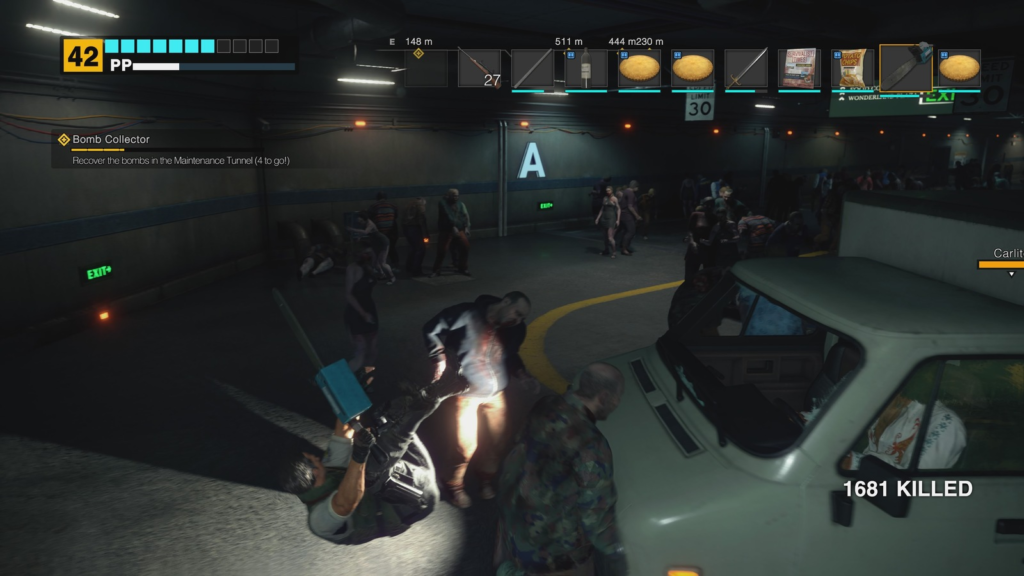
For example, consider someone who walks all the way across the mall, dies in a boss fight, and then continues from an autosave. Will they reconsider, understand the mall’s layout, and determine where the appropriate resources are before challenging the boss again? Or will they simply brute force their way through the combat, trying it over and over in their current state? Losing progress in the present might be unpleasant, but it also provides motivation to approach things differently. The autosave mechanism discourages this strategy, particularly among novice players, who are likely to have a lower tolerance for short-term inconvenience.
It’s difficult to say whether it’s better for players to abandon the game out of irritation or to brute force their way through it without understanding. What I can tell you is that they most certainly deluxe remastered this game in particular since Capcom knows how much the original Dead Rising is loved and understood by its fans. Those fans like the design because the game compelled them to.
If you build a new following of people who don’t like what the game is doing, you’ll get strange feedback that will harm future entries. Dead Rising previously failed as a series owing to feedback based on misunderstandings about its popularity. Dead Rising 3 and 4 in particular emphasized ways to kill zombies (the least fascinating element) while downplaying factors like the timer and careful navigation (the game’s stress sources). Based on the revisions in the Deluxe Remaster, I’m not certain that Capcom’s creators know exactly what a new Dead Rising would look like other than “a little more like the first one, probably,” and the autosave demonstrates a lack of trust in its design, which concerns me.
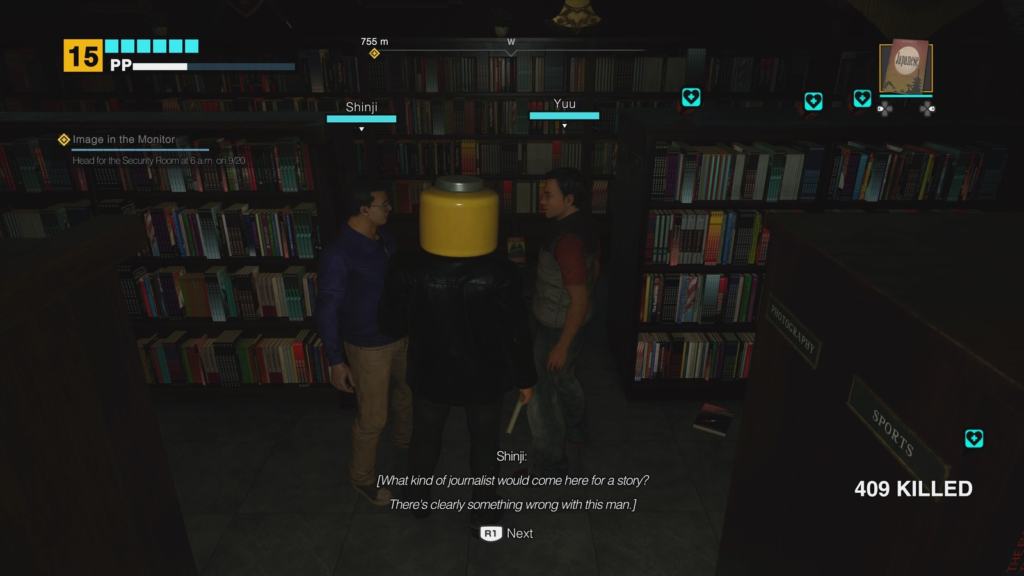
Modern conveniences also invalidate the game’s secret Infinity Mode. The goal behind Infinity Mode is to transform the mall into the ultimate endurance test. The mall becomes into a sandbox with no defined finish; the game continues indefinitely, providing you can live – with the extra obstacles of your health slowly deteriorating and all other survivors becoming hostile. I’m not going to pretend to be a great fan of Infinity Mode. My disdain for it arises from the ridiculous time commitment. It’s a nice notion, but the game only pays you for living past the 5 and 7 day thresholds, and time moves at the same rate as in the original mode. To say the least, it was tedious! The Deluxe Remaster alleviates the tedium by allowing you to fast forward time and make suspend saves.
Whereas in the past, you had to set aside a day of your life to babysit your Xbox 360 for 14 hours, you may now speedrun the mode and recover from mistakes with well-timed saves. These adjustments, I believe, fix my main issue with the mode, but they also neuter it to the point where I no longer want to play it. Just give me the laser sword and Ghost n’ Goblins boxers!
The societal critique of Dead Rising has also been toned down. Dead Rising is directly inspired by George Romero’s Dawn of the Dead. The game’s setting in a zombie-infested retail mall makes this evident, but the inspiration goes deeper. Dawn of the Dead has frequently been considered as an open indictment of American culture and the economic class gap, while Dead Rising continues where those critiques left off. The game’s identity is heavily influenced by how it satirizes consumerism, corporate and government exploitation of misery, and the unethical nature of journalism.
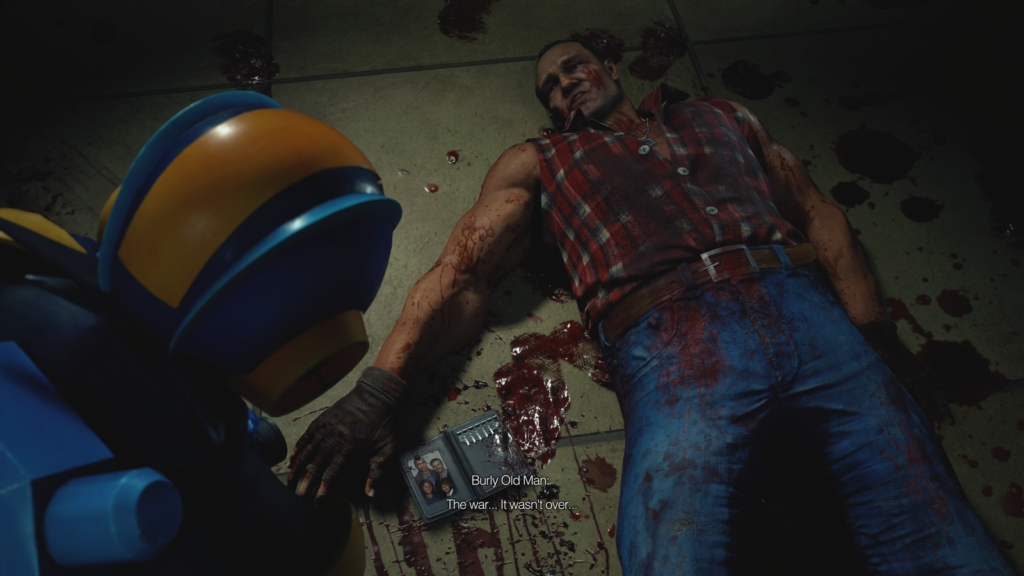
Surprisingly, the Deluxe Remaster incorporates adjustments that reduce its cutting tone. Cliff, one of the psychopaths, is a Vietnam War veteran who snaps in one of the game’s most horrific scenes. In the Deluxe Remaster, nevertheless, he makes no mention of Vietnam. Given how the game presents the government, you’d think it would be a worthwhile connection, but the game now avoids making it.
Probably the most contentious change: Capcom just issued a statement confirming the elimination of “Erotica” points, which you would earn for capturing photographs that the game deemed sexy. You can still take sensual photos; but, the game will not reward you for them. According to Capcom, “when considering Frank’s situation, it is not an appropriate reward for survival and not a skill required of a journalist trying to stay alive.” For comparison, “funny,” “dramatic,” and “brutal” photographs equally irrelevant to Frank’s survival nevertheless provide points.
Aside from Capcom’s blatantly false explanation, the ridiculousness of being rewarded for attractive images during a zombie apocalypse was the whole point. The “Erotica” category almost definitely stems from the tabloid style of journalism, particularly the type prominent around the time Dead Rising was developed, when upskirts and other invasive images of celebrities were in high demand. Despite his noble characteristics, Frank is a rather shady individual. He inserted himself into the gaming scenario solely for personal advantage. He exploits the suffering of others in the same way that those responsible for the zombies do. Removing these points detracts both Frank’s persona and the game’s message about people like Frank.
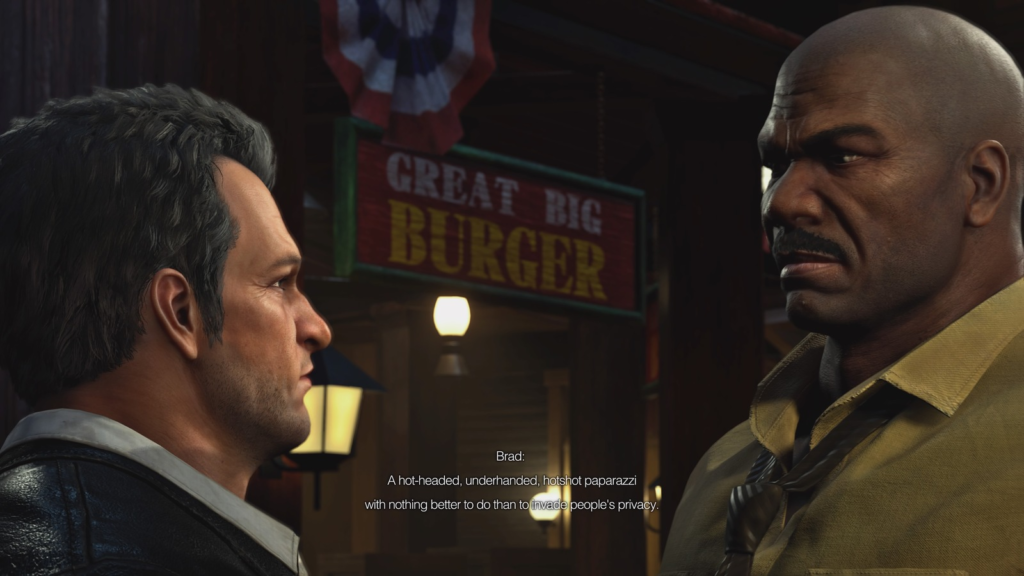
Now, I’m not going to tell you that these modifications spoil the game or are part of a larger plot. These adjustments, in my opinion, are less about appeasing any one crowd and more about a hastily planned attempt to avoid conflict entirely. However, they make the game feel much different. These changes indicate that possibly uncomfortable humor will not be welcome in a mainstream product in 2024, as it was in 2006.
Even if you don’t see the changes, the graphics will be noticeable. The visuals were clearly the focus of this remake. And, well, does it look good? I feel awful since, despite the effort, I believe the graphical improvements are the least engaging aspect of the package. The realistic lighting and texture changes undoubtedly lend depth and authenticity to the mall, and the zombies’ gore is particularly nasty. I’m not sure if I needed that much depth – I already enjoyed how the game looked, so the updated visuals serve little purpose other than to pique my interest. Yes, this is roughly how Dead Rising would appear if it were released in 2024, and that’s all I have to say about it!
However, my favorite Dead Rising was released in 2006. That Dead Rising was bold. It made no compromises on game design or narrative. It may not have the nicest graphics currently, but it does the job. When compared to the Deluxe Remaster, I can’t help but feel disappointed with the current version.
If they were going to perform a project like the Deluxe Remaster, I believe they should have included more new stuff. This edition does include a few new items, like as some (unhinged) skill books and DLC costumes, but none of them introduce additional survivors, bosses, or scenarios, which may have let this rerelease (not a typo) stand on its own. As is, I’ll stick to the earlier rerelease.
This Deluxe Remaster of Dead Rising retains its chilly, zombie heart, and Dead Rising remains a fantastic game. If you’ve never played it before, this is an adequate introduction. As remarkable as its efforts to bring Dead Rising into the contemporary day may be, none of them feel necessary. These games have zombies, so let me put it this way: Dead Rising from 2006 bit me hard enough to leave an imprint that has yet to fade. Dead Rising 2024 bites with substantially shinier teeth, but fails to leave a lasting impression. Perhaps this is just a sign of the times!
Review Overview
Gameplay: 78%
Controls: 80%
Aesthetics: 82%
Content: 85%
Accessibility: 77%
Value: 80%
Overall: 80%
GOOD
Summary: Dead Rising Deluxe Remaster breathes new life into the traditional zombie-slaying chaos while retaining the series’ characteristic blend of action and dark humor. The gameplay seems familiar yet polished, with improved mechanics and features. The controls are responsive, making battle and exploring entertaining despite some outdated components. Aesthetically, the remaster improves the visuals significantly, increasing the ambiance while retaining the original charm. The material remains substantial, with plenty of replay value, and while accessibility is adequate, it may benefit from more recent improvements. Overall, this is a solid remaster that keeps the zombie-hunting fun going.

